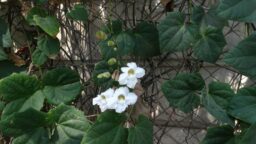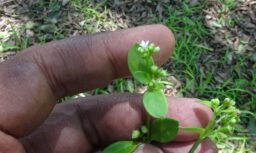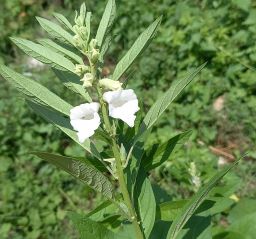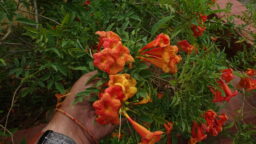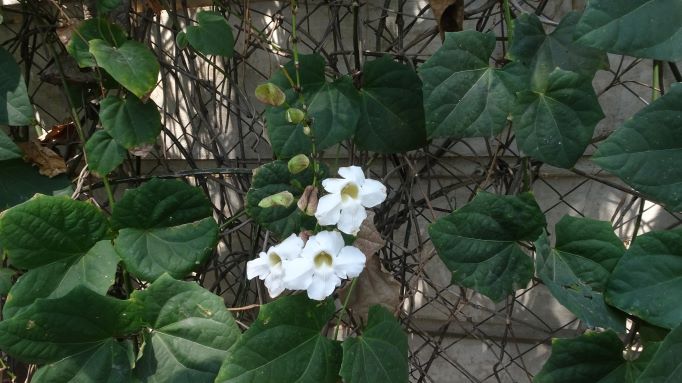
Common Name: Bengal clock vine.
Bengal clock vine is a massive climber planted for its large ornamental flowers and seen all over India. It climbs over surrounding trees and other vegetation and can spread itself to over 15 meters. The leaf stalk and leaf length are around 7 cm and 16 cm. The leaf is broadly ovate in shape and may have as many as 7 shallow lobes. The leaf base is cordate and the lobe apex is acute. The leaf surface is rough on both sides: prominently so on the upper-side. The middle nerve and three pairs of leaf nerves on the lower side of the leaf are exposed prominently. The inflorescence is in the form of long terminal raceme. The flowers are large with a pedicel measuring 3.8 cm; the flower is bell shaped (bi-lipped) and 7 cm across. The fragrant flower has 5 petals joined together they are blue or white in color. The funnel neck of the flower is hairy inside and is light yellow in color. The flower is guarded by two light green colored striated bracts which are elliptic in shape and have a sharp tip. The calyx is reduced to a rim. The flower holds within 4 filamentous stamens of white color. The fruit is in the form of capsule containing four seeds, they break open to disperse the seeds. Thunbergia laurifolia looks similar to T grandiflora. The main differences are: in T. laurifolia the leaf length is much shorter at around 12cm. Also the leaves don’t have a cordate base. This plant is native of the Indian sub-Continent. This plant is well suited for large gardens as an ornamental vine. The plant is well suited for butterfly gardens as a nectar source plant.

